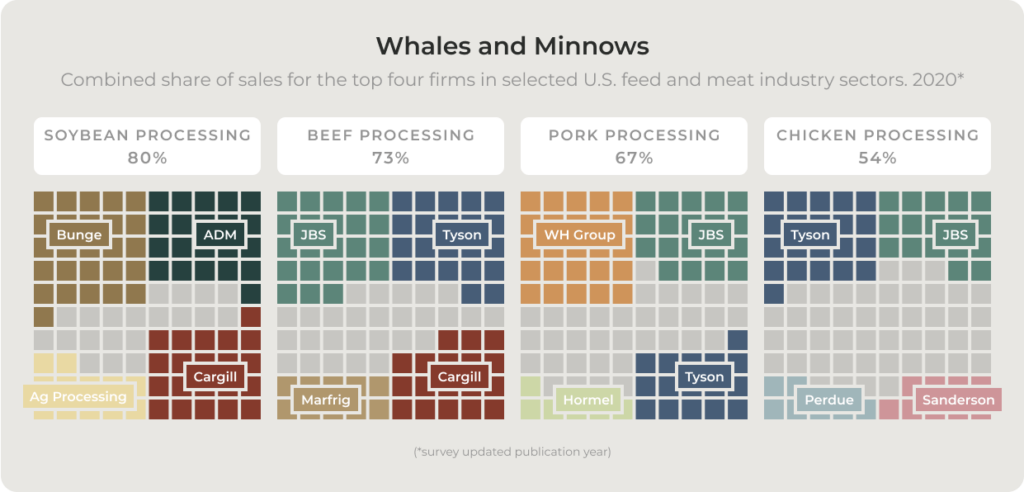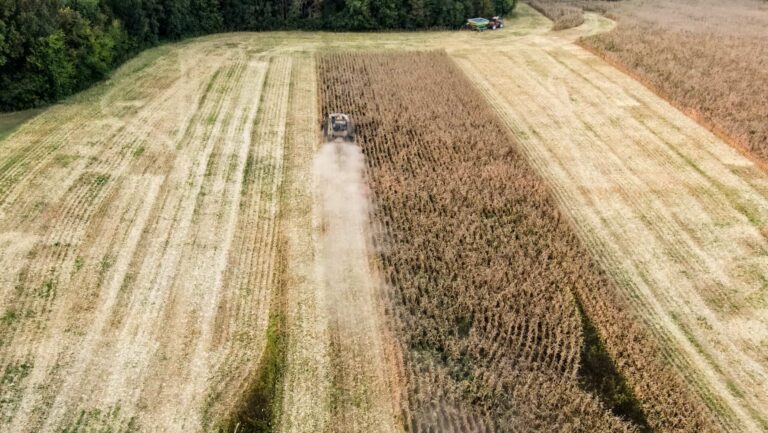The Good and Bad of Consolidation
Consolidation, especially in the U.S. food system, often carries a negative connotation—and for good reason. Consolidation has been gradually happening throughout our agricultural supply chain for over a century, from farms to grocery stores. Its consequences were pushed into the limelight during the COVID-19 pandemic, when major outbreaks led to widespread closures and significant supply chain disruption. Take, for example, the U.S. meat processing sector and its inability to keep grocery store shelves stocked when just a handful of meatpackers were forced to temporarily cease operations.

Is All Consolidation Bad?
It’s easy to see how the example above is a problem. But that’s just one piece to the puzzle. As we began to discuss in last month’s newsletter, consolidation in the U.S food system is complex and often unavoidable. Specifically at the farm level, there’s both a good and bad way to go about it.
AN UNCOMFORTABLE TRUTH
Without the optimized efficiency consolidation brings, feeding a growing population would become increasingly difficult and many American family farms would not survive.
While initially uncomfortable, I’m here to tell you it’s not all doom and gloom. With the rate of retirement outpacing the number of new farmers entering the industry, consolidation could be a foe turned friend when done correctly.
Because when we back the nation’s most successful farmers and help them grow—we all reap the rewards.
Keeping Farmland in the Hands of Farmers
At AgAmerica, we believe that these family farms should be equipped with the resources and capital they need to consolidate on their own terms. Our commitment to advancing the interest of our nation’s farmers means helping them stay in the game.
Now, more than ever, investing in America’s farmers means investing in the future of food security. As consolidation continues, there’s a unique opportunity to support these hardworking families the right way while also generating alpha on your investment.






